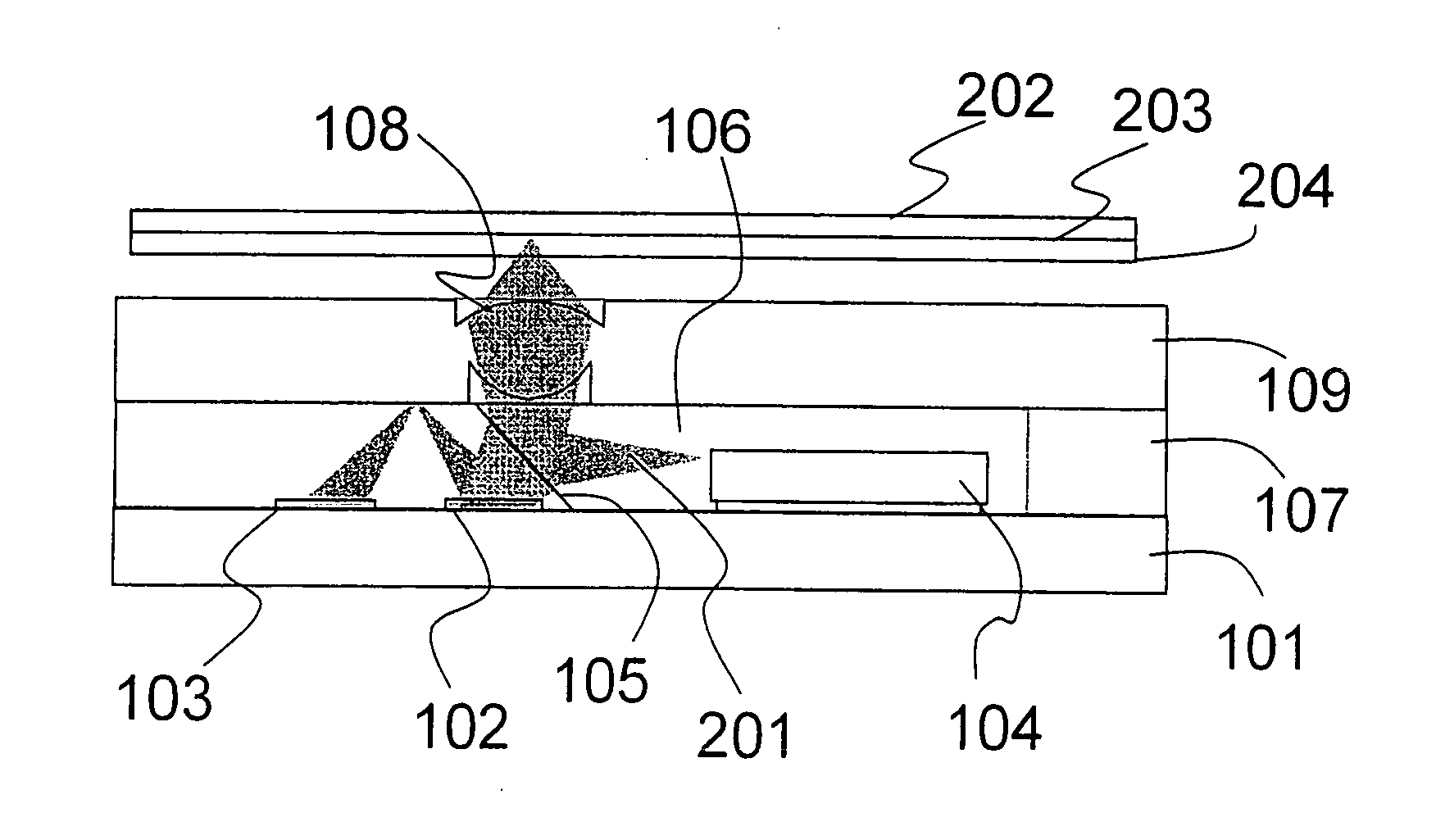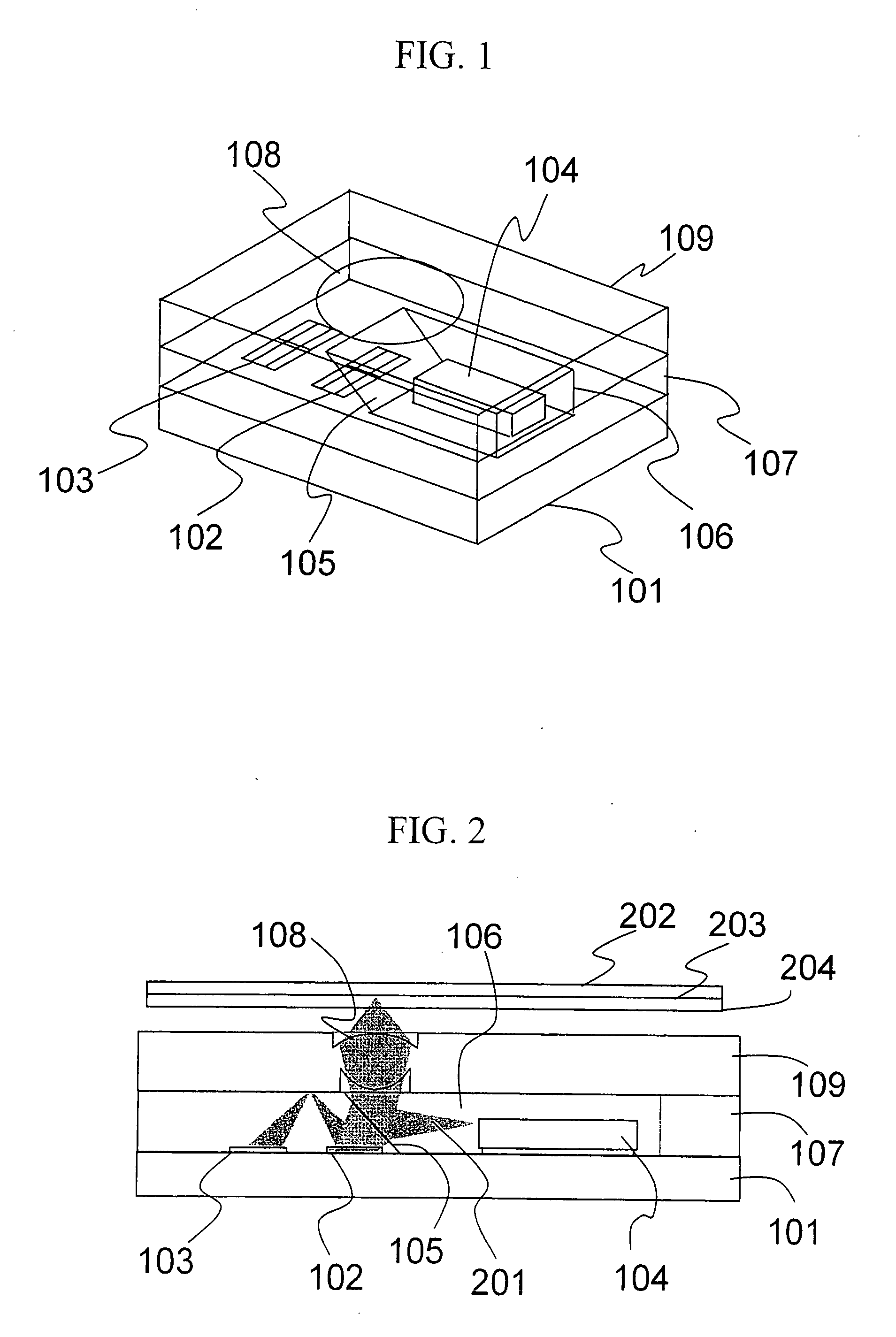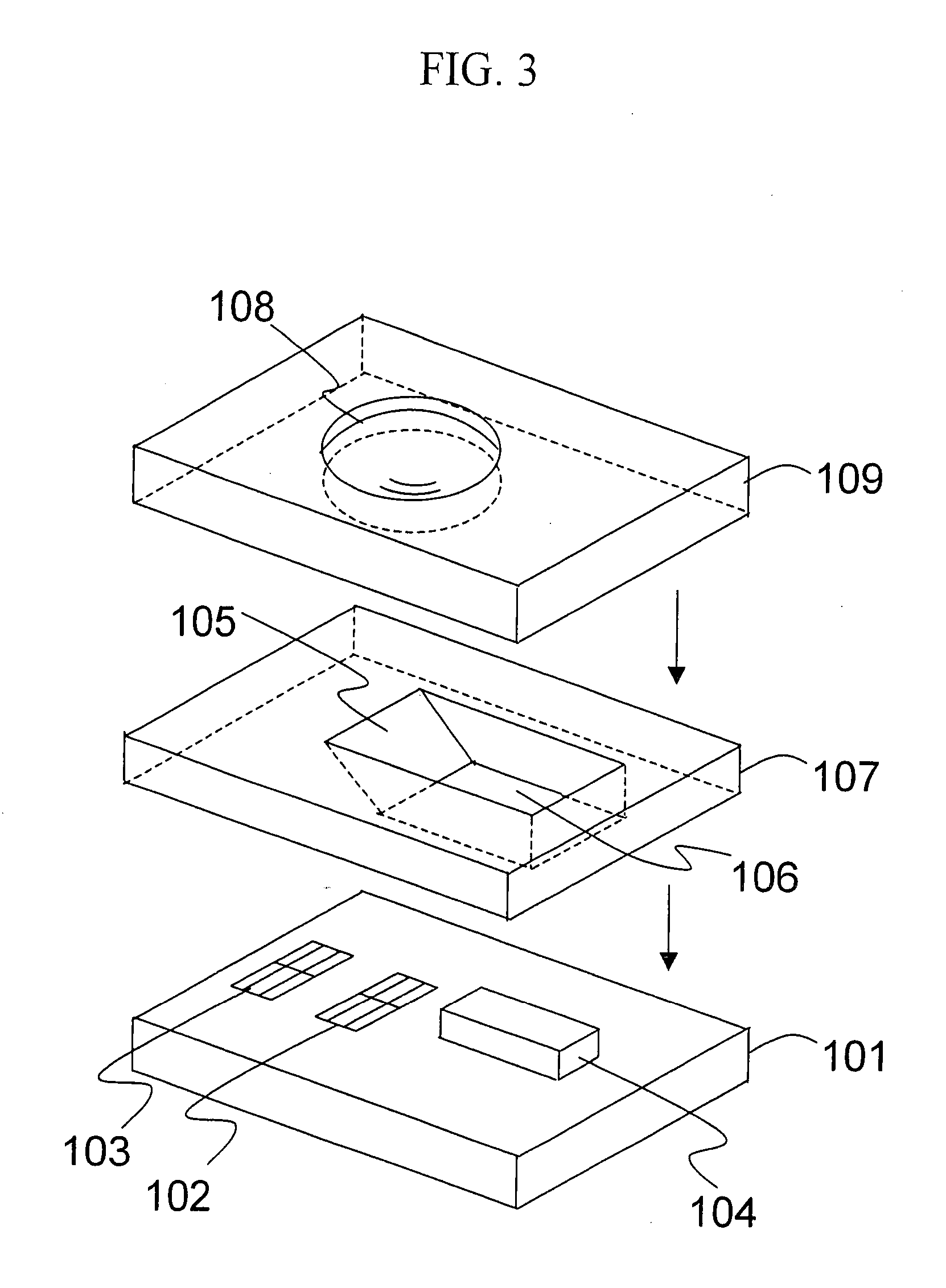Optical head, optical information storage apparatus, and their fabrication method
a technology of optical information storage and fabrication method, which is applied in the direction of instruments, mirrors, data recording, etc., can solve the problems of reducing the size of the optical head, difficult to handle such components for assembly or adjustment purposes, and the objective lens is difficult to adjust, so as to achieve accurate manufacturing in large quantities, increase the magnification of the optical system, and reduce the siz
- Summary
- Abstract
- Description
- Claims
- Application Information
AI Technical Summary
Benefits of technology
Problems solved by technology
Method used
Image
Examples
embodiment 1
[0052]FIG. 1 shows the basic structure of an optical head according to the invention. The optical head comprises a silicon substrate 101 on which photodetectors 102 and 103 are fabricated and further a semiconductor laser 104 of the Fabry-Perot type is mounted. On top of the silicon substrate, a prism / mirror substrate 107 with a cavity 106 having a reflecting mirror 105 is bonded. On top of the prism / mirror substrate, there is further bonded a lens substrate 109 with an objective lens 108 fabricated therein. The four sides of the individual substrates are aligned such that each side is substantially in the same plane. By “substantially in the same plane” herein is meant that the plane may include some surface irregularities that are produced in practice when such layered substrate wafers are diced in a manufacturing process, as will be described later.
[0053]FIG. 2 shows a lateral cross section of the optical head shown in FIG. 1, additionally showing a light flux 201 and an optical...
embodiment 3
[0071]FIGS. 17A and 17B show an embodiment of a small-sized optical disc unit utilizing a ultra-small optical head 1701 according to the invention. FIG. 17A is a plan view, and FIG. 17B is a side view. The small optical head 1701 is mounted on an actuator arm 1708, which can be moved finely by a focus actuator 1707 in the direction of the optical axis of the objective lens in the optical head. The actuator arm 1708 and the focus actuator 1707 are fixed to a swing arm 1703, together with a counter balance 1705. The swing arm 1703 is driven by a swing motor 1704 so as to move the small optical head 1701 in the radius direction of an optical disc 1709. The optical disc 1709 is rotated by a spindle motor 1702. Input and output of signal to the optical head are enabled by flexible plastic cables (not shown) connected to a control circuit 1706.
[0072] When the thus prepared optical head is mounted and driven on an actuator, a large amount of disc eccentricity can be dealt with even when t...
embodiment 4
[0073]FIG. 18 shows another embodiment of the invention, in which a quarter-wave plate 1801 with a thickness of approximately 0.1 mm is inserted between an objective lens 804 and a collimator lens 802. A plane is formed in the peripheral areas of each lens that is flat and protruding from the lens planes, and the quarter-wave plate 1801 is sandwiched between these planes. In this way, the quarter-wave plate 1801 can be fixed between the objective lens substrate 805 and the collimator lens substrate 803, using an adhesive agent (not shown) or the like, without the plate coming into contact with the lens faces. The crystal axis direction of the quarter-wave plate 1801 is adjusted such that the transmitted light of the linearly polarized light incident on the quarter-wave plate 1801 becomes circularly polarized light. When the reflected light from the recording film 203 passes through the objective lens 804 again and further passes through the quarter-wave plate 1801 again, the light i...
PUM
 Login to View More
Login to View More Abstract
Description
Claims
Application Information
 Login to View More
Login to View More - R&D
- Intellectual Property
- Life Sciences
- Materials
- Tech Scout
- Unparalleled Data Quality
- Higher Quality Content
- 60% Fewer Hallucinations
Browse by: Latest US Patents, China's latest patents, Technical Efficacy Thesaurus, Application Domain, Technology Topic, Popular Technical Reports.
© 2025 PatSnap. All rights reserved.Legal|Privacy policy|Modern Slavery Act Transparency Statement|Sitemap|About US| Contact US: help@patsnap.com



